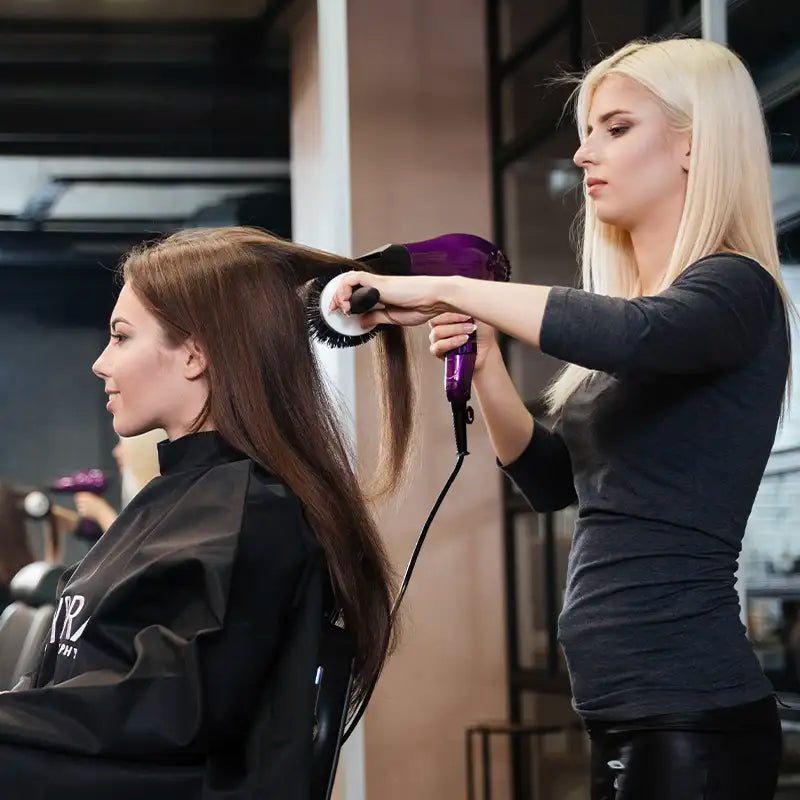Let’s Talk Texture and Porosity—Everything you need to know about Hair Texture and Porosity!

Being aware of the porosity and texture of your hair can help you grow healthy, gorgeous hair. Hair texture refers to the thickness and coarseness of individual strands, whereas hair porosity refers to how easily your hair absorbs and maintains moisture. Finding out the porosity and structure of your hair might help you select the ideal hair care items for your mane. So let's get started by discussing the finest treatments for each type of hair porosity and texture while also exploring the many varieties of hair.
Levels of Hair Porosity
Low Porosity Hair
Hair with low porosity is distinguished by its capacity to fend against moisture. Water has a hard time penetrating the densely packed cuticles on the hair strands. Low-porosity hair may feel dry and may be more susceptible to product buildup as a result. To help hydrate and nurture low-porosity hair, try utilizing lightweight, water-based solutions that can penetrate the cuticles. To minimize product accumulation, you can apply a mild conditioner and concentrate mostly on the ends. Avoid using thick oils and butters that might weigh down your hair by sitting on top of it. If you also have thin, delicate strands, volume might be what you're after. Find items that aid in lifting the hair at the root or include it as a hair goal.
Normal Porosity Hair
The hair with the most normal porosity is the most manageable and has good moisture absorption and retention. It is simple for water and nutrients to penetrate because the cuticles on the hair strands are neither too loose nor too firmly packed. A lot of products work well on normal porosity hair, but do seek out anti-frizz products, especially if your mane is exposed to a lot of humidity.
High Porosity Hair
High porosity hair is distinguished by its rapid absorption and rapid evaporation of moisture. The elevated and open cuticles on the hair strands make it simple for water to enter. However, if the hair is not properly hydrated, this can also result in frizz and breaking. Try using emollient-rich products, such as shea butter and coconut oil, to high porosity hair to help it retain moisture. These components may aid in sealing in moisture and smoothening the hair cuticles. The natural oils in your fibers will be safeguarded by using a co-wash to gently cleanse your hair. To control the frizz and tangles, you could regularly apply leave-in conditioners. Use a deep-conditioning mask once in a while. The easiest way to reduce product accumulation without damaging your fibers is to use a clarifying shampoo at least once every week or a few weeks, rather than daily.
Types Of Hair Texture
Fine Hair
The strands of fine hair are thin, and there is little volume. Even though managing fine hair can be simple, it can also be more prone to breakage and damage. Use mild products, like mousse or texturizing spray, to give fine hair more texture and volume. Avoid applying thick lotions and oils to your hair because they might weigh it down and make it look flat.
Medium Hair
While not as thick as coarse hair, medium hair is thicker than fine hair. It is distinguished by its adaptability and strong style-holding capacity. Try using products that are high in proteins and nutrients, such as keratin and biotin, to maintain medium hair strong and healthy. These components may aid in preventing breaking and strengthening hair strands.
Coarse Hair
Thick, rough strands make up coarse hair, which can be challenging to style. It is crucial to utilize products that are high in moisture and hydration because it is frequently prone to dryness and breaking. To keep coarse hair strong and healthy, try utilizing deep conditioning treatments and hair masks. The use of products containing alcohol or sulfates should be avoided because they can strip the hair of its natural oils and exacerbate dryness.
Are you curious about the porosity rankings for the various hair types? Take a look at this list below:
The least porous hair is straight hair. Its fibers have perfectly aligned cuticles that reduce the ability for moisture to enter and exit the fabric.
Hair that is curly or wavy has more pores. Moisture has a little bit more of a chance to enter and exit the fiber since the hair cuticles are laid out more loosely.
The most permeable hair is coily hair. Due to the hair shaft's loose cuticles, moisture is quickly absorbed and lost.
Still wondering how to determine your hair porosity? Here are a few quick tests to determine how porous your hair is.
The Water Droplet Test
Take a few of your hair strands and dab them with some water. Does the water simply pass through or sit on top of your hair? You have high porosity hair if the droplet seeps into it rather rapidly. You have low porosity hair if it remains there for a while.
The Float Test (aka the Strand Test)
Add a few hair strands to a glass of water. Less porous hair will continue to float at the top after a short while, while more porous hair will sink to the bottom.
The secret to having healthy, gorgeous hair may lie in understanding the porosity and texture of your hair. You can invest in the correct regimen to benefit your hair if you have a better
understanding of it. By using products that are specifically designed for your hair type and needs, you can help to moisturize, nourish, and strengthen your hair. Your hair will appreciate you being patient and consistent with your hair care regimen. Rock your greatest hair yet, embrace your hair type, and go all out!




